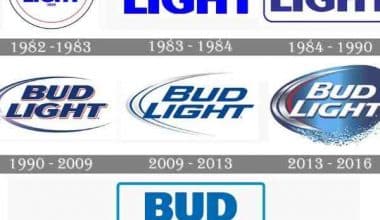One of the most recognizable symbols in the world has just recently undergone a long-overdue redesign. The instantly identifiable image of a figure in a wheelchair set against a blue background has been used for decades to designate specific areas for use by disabled people and to signify that stairways, elevators, bathrooms, and other utilities are accessible to disabled individuals. This image is known as the “International Symbols of Access.” The symbol has, until relatively recently, remained relatively unchanged; however, there has been a recent push to adopt a new and updated version of the handicapped logo.
To understand this new logo and why it is essential, we will first examine the history of the old logo, the design elements of the new logo, and the message that it is intended to portray. After that, we will examine the new logo itself.
A Brief Overview of the History of the Handicapped Logo
In 1968, Rehabilitation International, a federation consisting of 145 organizations located in 82 different countries, held discussions to determine what symbol they should use to designate areas that are accessible to people with disabilities. At this point, Susan Koefoed submitted her design so that it could be considered along with six other possible designs.
Almost immediately after that, Koefed’s design was selected, and the white figure in a wheelchair that was set against a square with a royal blue background went on to achieve worldwide reorganizability as the symbol that is used to mark spaces that are reserved for disabled people, indicate buttons that are used to activate automatic doors, denote handicap accessible areas, and several other uses.
Since so many different organizations used Koefoed’s initial design, there has been no need or practical reason to alter the handicap logo since it was introduced in 1968. There is now a compelling case for the logo to be modernized, even though doing so in every region will continue to raise specific logistical challenges.
What Changes Have Been Made to the Handicapped Logo, and Why These Changes Are Important
A few significant alterations have been made to the new handicapped symbol designed by artist Sara Hendren and philosophy professor Brian Glenney. To begin, the latest design depicts a disabled person with their head tilted forward, which suggests that they have mobility and are in control of where they are going. The individual is depicted in the new design with their arms back, demonstrating once more that they are dynamic and in charge of their mobility.
Both Hendren and Glenney are firm believers that perspective is everything. They have high hopes that the widespread use of their newly designed logo will encourage people with disabilities to have a more optimistic outlook on their condition. The messages we send, such as how people with disabilities are depicted in the very symbol designed for them, are essential to consider as we work toward a society that is more accepting of and accessible to people who suffer from any form of disability.
It may not seem like much, but the messages we are sending, such as how people with disabilities are depicted in the very symbol that was designed for them, are essential to consider. Even though there is still much work to be done, the initial reaction has been largely positive. Already, the Accessible Icon Project is seeing some early success in replacing the old symbol with its new design.
Handicapped Logo: Brand History
Susanne Koefoed, a design student from Denmark, came up with the idea for the ISA in 1968. The Scandinavian Students Organization (SDO) hosted a radical design conference, where the idea’s first sketches were created. The group planned a summer study session at the art and design college in Stockholm known as Konstfack, where they split their time between smaller workshop sessions and larger lecture halls.
The American fashion designer and educator Victor Papanek was the one who established the mood for these lectures. In the writings he formulated during this period, he also imagined people who were disabled, both physically and mentally, as figures who required renewed attention. This attention could have been given to them in several ways.
Even though there is no evidence that Papanek ever met Koefoed, his influence was felt throughout the seminar, which was used to draft the initial version of the ISA. Koefoed, tasked with developing a sign-symbol that would indicate barrier-free accommodations, presented an early version of the symbol at the exhibition held at the SDO seminar’s conclusion in July 1968. The logo for Koefoed is an image of an empty wheelchair. The year after, this icon received significant publicity all over Sweden.
Read Also: What Are Balloon Payments on Cars? All You Should Know
Rehabilitation International was another recipient of Karl Montan’s efforts to spread the word about Koefoed’s design. Montan is the director of Sweden’s brand-new Handicapped Institute. Montan exerted effort toward creating a symbol that would serve specifically as a technical aid. R.I. asked Montan, who was serving as the head of the organization’s International Commission of Technology and Accessibility (ICTA) at the time, to establish a special committee to search for and bring a symbol to the organization’s 1969 convention in Dublin.
The members of Montan’s group were given the option of selecting one of six symbols. After the presentation of Koefoed’s symbol, several members voiced dissatisfaction, stating that it was too severe and illegible. According to what Montan had to say about it, “a minor inconvenience with the symbol is the equally thick lines, which may give the impression of a monogram of letters.” If the symbol had a head, we wouldn’t have to deal with this inconvenient situation.” Using the first draft of the design, Montan would add a circle to the top of the seat to create the illusion of a seated figure. This was done by taking the original copy of the design.
Handicapped Logo: Functions
The symbol is frequently found in locations where access has been improved, most notably for people who use wheelchairs but also for people with other types of disabilities.[9] The symbol is frequently used to indicate the removal of environmental barriers, such as steps, which helps people of a certain age, parents who have baby carriages, and people who are traveling.
The goal of universal design is to eliminate the need for such symbols by producing goods and facilities that are accessible to the vast majority of users from the very beginning. Because the wheelchair symbol is considered “International,” it is not accompanied by Braille in any specific language.
The following are some specific applications of the ISA:
- Putting a sign up to indicate that a parking spot is reserved for vehicles driven by people with disabilities or people who have blue badges
- The identification of a car driven by a person with a disability, typically to obtain permission to use a space
- Identifying a public restroom that has accessibility features for people who use wheelchairs
- Pointing to a button that can open a door that opens automatically
- Indicating a transit station or vehicle that is accessible to the public
- Showing a public transportation route that makes use of cars that are accessible
The California Building Code, among other building codes, stipulates that “a white figure on a blue background” must be used. The shade of blue must be the same as Color No. 15090, found in Federal Standard 595B.
Modified ISA
There are disability rights activists who are pushing for an updated version of the access symbol. Sara Hendren and Brian Glenney co-founded the Accessible Icon Project. They designed the new icon to display an image that is active and engaged, with the focus being on the individual who has the disability. Some disability organizations, such as Enabling Unit in India, are advocating for its use, and New York and Connecticut in the United States have adopted this particular iteration of the symbol for official use. The Museum of Modern Art has included the Modified ISA as part of its permanent collection. Those who have a disability but do not make use of a wheelchair are still subjected to social stigma, according to Emma Teitel of the Toronto Star. Critics say that the modified image would continue to have this effect.
The United States Access Board is the agency that is responsible for developing the federal criteria for accessible design. In May 2015, the Federal Highway Administration rejected the new design for use on road signs in the United States, citing that it had yet to be adopted or endorsed by the U.S. Access Board. This agency is responsible for developing the federal criteria. The International Organization for Standardization, which mandated the customary application of the initial symbol by ISO 7001, is another organization that does not approve of the design.
Related Articles
- Short-Term Loans: Definition & Best Easy 2023 Guide
- 21+ Best Affiliate Marketing Companies in 2023, Updated
- Relationship Between Interest Rates and Inflation (Detailed Analysis)
- Piggyback Mortgage: Is It a Good Idea?
- Free Affiliate Programs: 2023 Best Easy Guide
- TRAVEL AFFILIATE PROGRAMS: 15+ Best Picks in 2023
- AIRBNB AFFILIATE PROGRAM: Why It Ended & Alternatives
- How Much Should You Contribute to 401(k), Explained!!!






